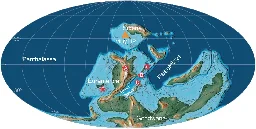Study reshapes understanding of mass extinction in Late Devonian era
Study reshapes understanding of mass extinction in Late Devonian era
Diverse and full of sea life, the Earth's Devonian era—taking place more than 370 million years ago—saw the emergence of the first seed-bearing plants, which spread as large forests across the continents of Gondwana and Laurussia.

Diverse and full of sea life, the Earth's Devonian era—taking place more than 370 million years ago—saw the emergence of the first seed-bearing plants, which spread as large forests across the continents of Gondwana and Laurussia.
However, a mass extinction event near the end of this era has long been the subject of debate. Some scientists argue the Late Devonian mass extinction was caused by large-scale volcanic eruptions, causing global cooling. Others argue a mass deoxygenation event caused by the expansion of land plants was to blame.
A recently published study in the journal Communications Earth & Environment led by researchers at IUPUI now posits that both factors played a role—and draws attention to the environmental tipping points the planet faces today.